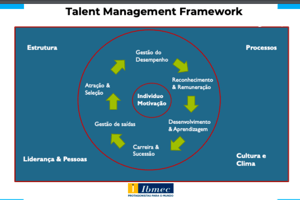Podcast
Questions and Answers
What is the primary goal of talent identification?
What is the primary goal of talent identification?
- To identify skill gaps in employees
- To recognize and select individuals with exceptional abilities or potential (correct)
- To develop a competency model for a particular job or role
- To prioritize training and development programs
What is the first step in conducting a skill gap analysis?
What is the first step in conducting a skill gap analysis?
- Develop a plan to address the gaps through training, coaching, or mentoring
- Assess the individual's current skills and competencies
- Identify the required skills and competencies for the job or role (correct)
- Prioritize the gaps based on importance and urgency
What is the purpose of competency mapping?
What is the purpose of competency mapping?
- To develop a training program for new hires
- To identify skill gaps in employees
- To evaluate employee performance
- To ensure that employees have the necessary skills and knowledge to perform their jobs effectively (correct)
What is the benefit of identifying talent early?
What is the benefit of identifying talent early?
What is the role of self-identification in talent identification?
What is the role of self-identification in talent identification?
What is the final step in conducting a skill gap analysis?
What is the final step in conducting a skill gap analysis?
What is the purpose of competency mapping in talent development?
What is the purpose of competency mapping in talent development?
What is the importance of skill gap analysis in talent development?
What is the importance of skill gap analysis in talent development?
What is the benefit of competency mapping in talent development?
What is the benefit of competency mapping in talent development?
What is the role of observations in talent identification?
What is the role of observations in talent identification?
Flashcards are hidden until you start studying
Study Notes
Talent Identification
- Definition: The process of recognizing and selecting individuals with exceptional abilities or potential in a particular area.
- Importance: Identifying talent early can lead to targeted development, improved performance, and increased retention.
- Methods:
- Observations: Watching individuals in action to identify exceptional skills or behaviors.
- Assessments: Using tests, quizzes, or simulations to evaluate skills and knowledge.
- Referrals: Seeking recommendations from colleagues, managers, or mentors.
- Self-identification: Allowing individuals to identify their own strengths and interests.
Skill Gap Analysis
- Definition: A process to identify the gap between an individual's current skills and the skills required for a particular job or role.
- Importance: Identifying skill gaps helps to focus development efforts, improve performance, and reduce training costs.
- Steps:
- Identify the required skills and competencies for the job or role.
- Assess the individual's current skills and competencies.
- Compare the required skills with the individual's current skills to identify gaps.
- Prioritize the gaps based on importance and urgency.
- Develop a plan to address the gaps through training, coaching, or mentoring.
Competency Mapping
- Definition: A process to identify, categorize, and prioritize the key skills, knowledge, and behaviors required for a particular job or role.
- Importance: Competency mapping helps to ensure that employees have the necessary skills and knowledge to perform their jobs effectively.
- Steps:
- Identify the key responsibilities and tasks of the job or role.
- Determine the skills, knowledge, and behaviors required to perform each task.
- Categorize the competencies into clusters or groups.
- Prioritize the competencies based on importance and frequency of use.
- Develop a competency model to guide talent development and performance assessment.
Performance Assessment
- Definition: A process to evaluate an individual's performance and progress towards achieving specific goals and objectives.
- Importance: Performance assessment helps to identify areas of strength and weakness, provide feedback, and inform development plans.
- Methods:
- Self-assessment: Individuals evaluate their own performance and progress.
- Peer assessment: Colleagues or peers evaluate an individual's performance.
- Managerial assessment: Managers evaluate an individual's performance.
- 360-degree feedback: A combination of self, peer, and managerial assessment.
- Types:
- Formative assessment: Ongoing evaluation to inform development and improvement.
- Summative assessment: Evaluating performance at the end of a project or period to determine achievement.
Talent Identification
- Identifying talent early can lead to targeted development, improved performance, and increased retention.
- Methods of talent identification include observations, assessments, referrals, and self-identification.
Skill Gap Analysis
- Identifying skill gaps helps to focus development efforts, improve performance, and reduce training costs.
- The process involves identifying required skills and competencies, assessing current skills, comparing the two, prioritizing gaps, and developing a plan to address them.
Competency Mapping
- Competency mapping ensures that employees have the necessary skills and knowledge to perform their jobs effectively.
- The process involves identifying key responsibilities, determining required skills, categorizing competencies, prioritizing them, and developing a competency model.
Performance Assessment
- Performance assessment identifies areas of strength and weakness, provides feedback, and informs development plans.
- Methods of performance assessment include self-assessment, peer assessment, managerial assessment, and 360-degree feedback.
- There are two types of performance assessment: formative assessment (ongoing evaluation) and summative assessment (evaluating performance at the end of a project or period).
Studying That Suits You
Use AI to generate personalized quizzes and flashcards to suit your learning preferences.




